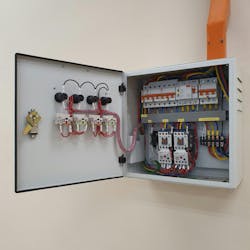Report examines convergence of ruggedization and miniaturization
Compact interconnects continue to grow in popularity in industrial automation and smart manufacturing. Blending the best of miniaturization and ruggedization can improve space efficiency, reliability, design flexibility, signal integrity and thermal management.
A report from Molex explores the ever-increasing role of ruggedized, miniaturized interconnect products in unlocking new possibilities for electronic device innovation across a growing swath of industries. “Breaking Boundaries: Uniting Ruggedization and Miniaturization in Connector Design” looks at the trends, tradeoffs and enabling technologies.
“Increasing demand for electronics in new vehicle platforms has intensified the need for smaller and rugged interconnects designed to withstand the harshest environments,” said Carrieanne Piccard, VP and GM, Transportation Innovative Solutions, Molex. “As a result, the ruggedization of miniaturized connectors has emerged as an overarching design principle, requiring a holistic approach across the entire lifecycle of components to achieve optimal product reliability, performance and longevity.”
Critical connectivity
The industry report defines miniature connectors as having a pitch of 2.54 mm or less, while ruggedness refers to features for withstanding the harshest environments and mechanical stresses. The convergence of interconnect ruggedization and miniaturization has enabled innovations in the automotive industry, especially in supporting electric vehicles (EVs) and zonal architectures.
The trend is permeating other industries, including robots, touchscreens and sensors in industrial automation.
Growing adoption of compact, durable connectors is gaining traction in other application areas, such as smart agriculture. Vertical farming systems with dense sensor and lighting installations require space-efficient connectors that work in wet, humid environments without interruption. Smaller, lighter and rugged connectors found in agricultural drones or “flying tractors” also must be protected against extreme temperature and excessive vibration, along with exposure to moisture, dust and corrosive chemicals.
Design boundaries
The report explores best practices for clearing major design and manufacturing roadblocks to facilitate the design of increasingly smaller, lighter and more reliable connectors. Aluminum alloys and specialized, high-strength steel, as well as high-performance polymers, offer exceptional durability and lightweight construction. Processing these materials into complex connector geometries, however, often calls for specialized techniques, ranging from micro-molding and high-precision machining to laser welding or selective plating.
In addition, dense pitch layouts enable higher-contact density to accommodate smaller device footprints, but they require high-precision manufacturing and assembly. Increased risk of crosstalk and ineffective heat dissipation also can occur. To mitigate these issues, engineers can rely on advanced signal routing techniques, shielding and isolation methods, along with advanced thermal management strategies like heat sinks or thermal vias.
Multi-functional terminals (MFTs) integrate multiple functionalities—power, signal and even mechanical features, like locking mechanisms, into a single compact connector. The report from Molex also investigates top environmental factors that can compromise component reliability while offering strategies and products to ensure optimal connector performance in harsh conditions. Strain relief features and contact design help optimize connector performance despite constant exposure to the stresses of vibration, shock and repeated mating cycles.

